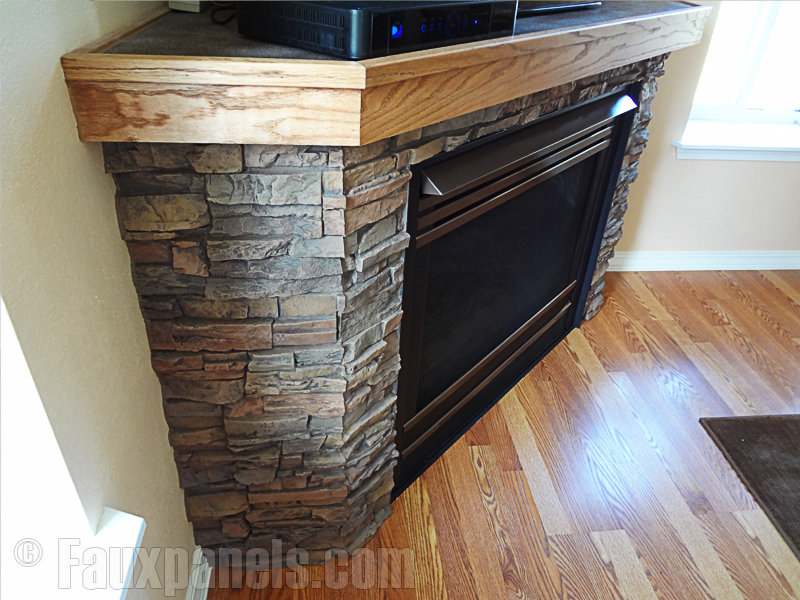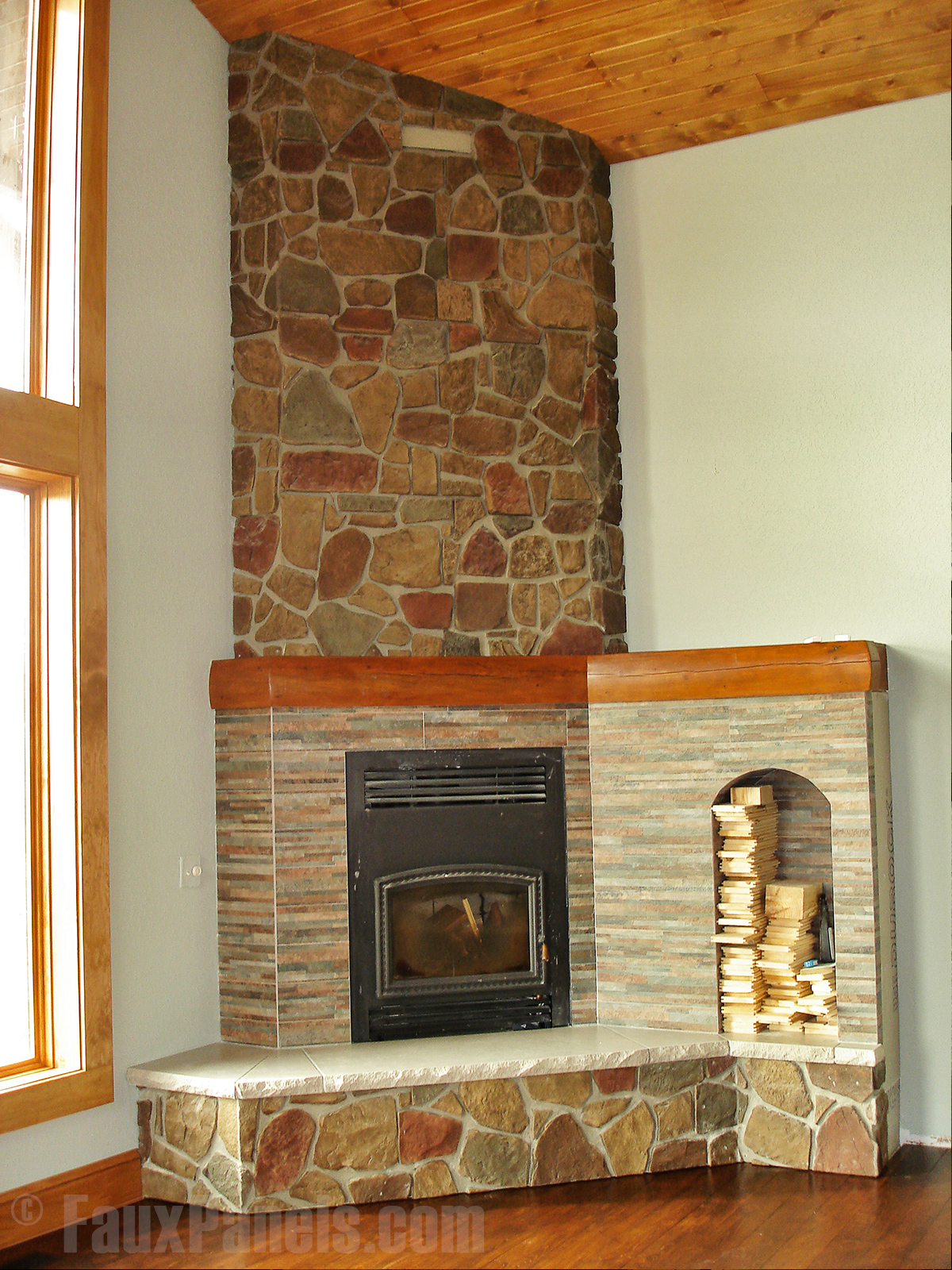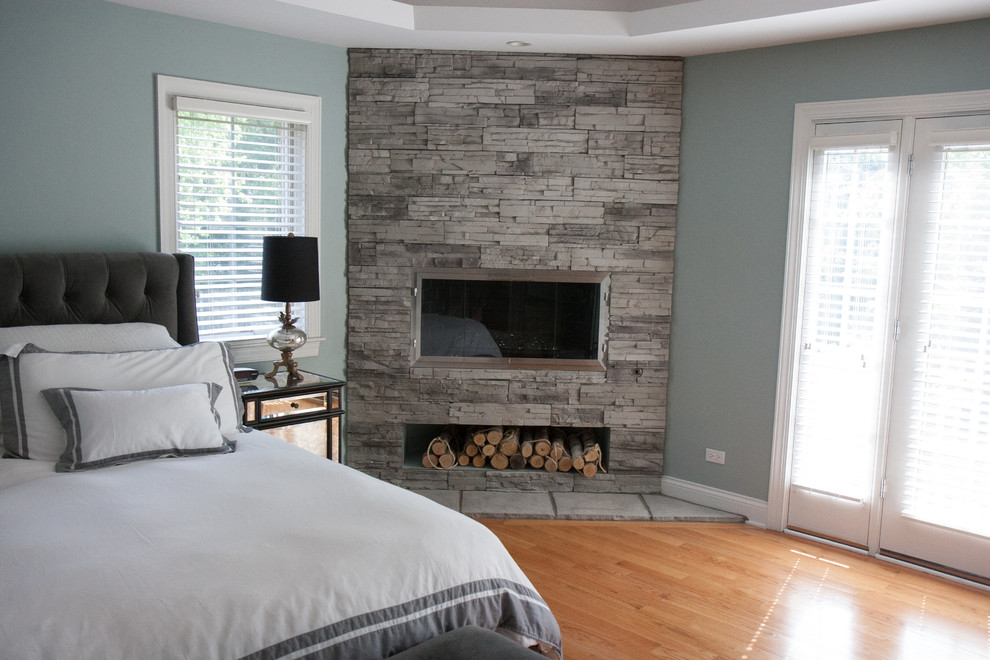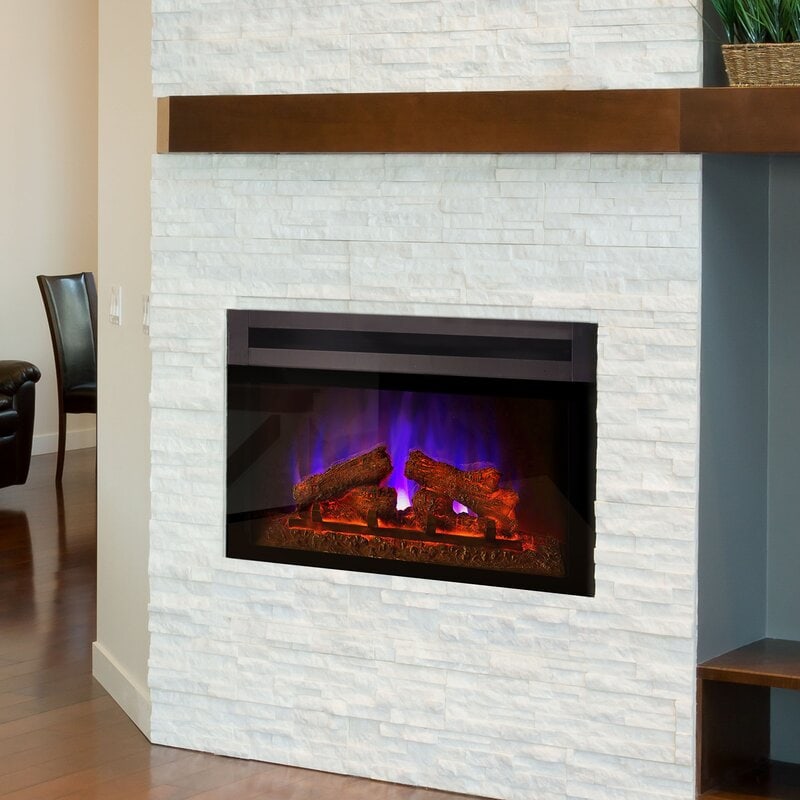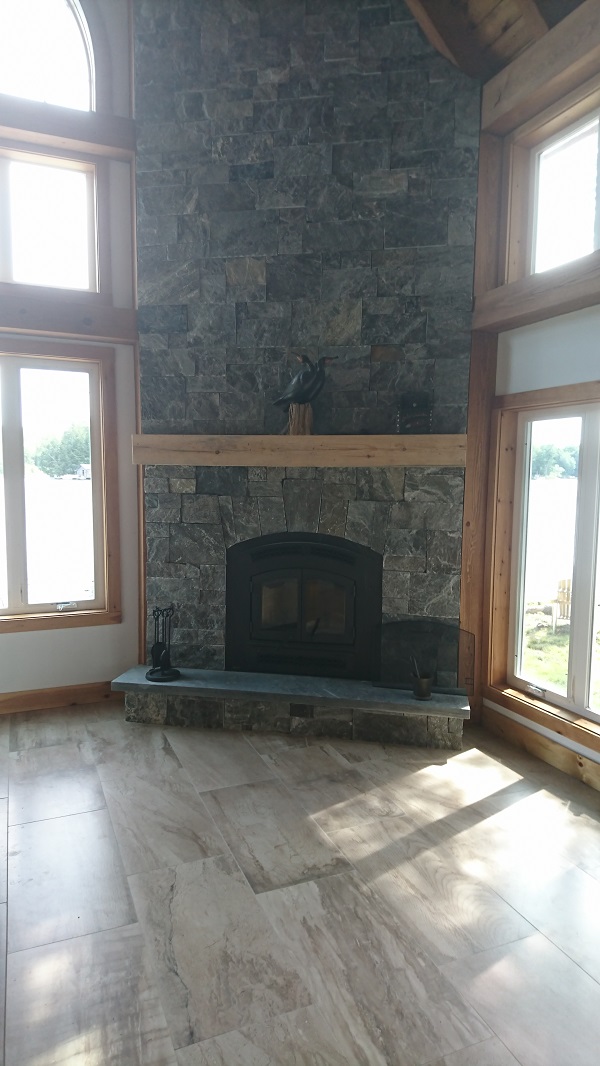A corner fireplace with stone veneer combines smart space utilization with timeless aesthetic appeal. This design solution works particularly well in open floor plans and smaller rooms where traditional fireplace placement would waste valuable square footage. Stone veneer offers the look of full masonry at a fraction of the weight and cost, making it ideal for corner installations. Below, we will discuss essential aspects of creating a stunning corner fireplace with stone veneer that becomes your room’s architectural highlight.
Selecting the Right Stone Veneer for Corner Placement
Corner fireplaces demand careful stone selection since the material will be visible from multiple angles. I prefer veneers with consistent coloration on all sides—no “bad” angles—like uniformly colored ledgestone or smooth ashlar patterns. Multi-dimensional stones with varying thicknesses (such as fieldstone) add wonderful texture but require skilled installation to wrap corners neatly. Lighter stone colors help prevent the corner from feeling too heavy or dark in the room.
Thin veneer products (typically 1-2 inches thick) work best for corners, minimizing how much space they consume. Many manufacturers now offer corner-specific pieces with pre-cut angles for seamless transitions. When viewing samples, examine how the stone looks on both vertical and horizontal surfaces—some varieties appear completely different when turned. I always recommend ordering extra corner pieces—they’re often the first to run out during installation.
For contemporary spaces, consider sleek stacked stone veneers with clean lines. Their geometric precision complements modern architecture beautifully. In rustic settings, tumbled limestone or irregular quartzite creates organic appeal. The corner placement means your stone choice will significantly influence the room’s overall character, so take time selecting the perfect match.
Designing the Fireplace Structure for Corner Installation
Corner fireplace designs require different structural considerations than wall-mounted versions. I typically build out the corner with metal studs or wood framing to create a 45-degree angled face rather than using the actual corner. This provides better surface area for stone application and creates a more functional firebox opening. The depth should allow at least 18 inches from the wall to the fireplace face for proper proportions.
Firebox placement matters greatly in corners. Centered openings create balanced symmetry, while offset designs can help direct heat into the room more effectively. I often incorporate a raised hearth that wraps around the corner—this provides visual weight and extra seating space. For gas fireplaces, corner units with diagonal viewing angles maximize the flame presentation from multiple room positions.
The height of your stone veneer installation affects the whole room’s proportions. Running stone to the ceiling makes a dramatic statement in spaces with high ceilings. For standard 8-foot ceilings, I usually stop the stone 12-18 inches below the ceiling line, transitioning to drywall or another material. This prevents the corner from feeling too imposing while still showcasing the beautiful stonework.
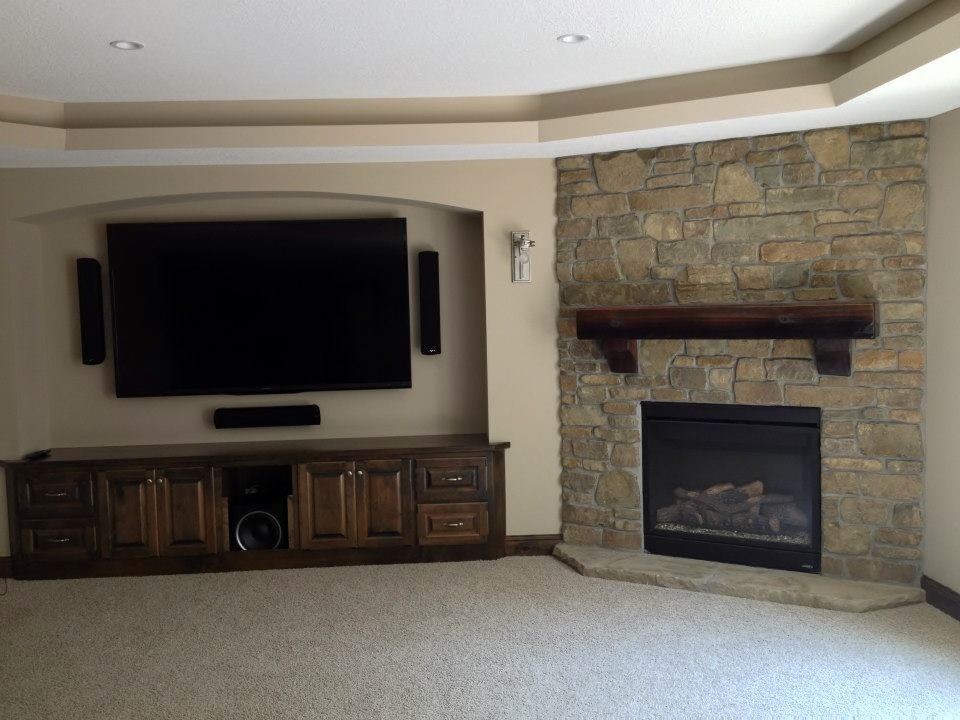
Corner-Specific Installation Techniques
Installing stone veneer in corners requires different approaches than flat walls. I start by establishing plumb lines on both adjacent walls using a laser level—this ensures the stone courses will align perfectly around the corner. Corner pieces should overlap in a staggered pattern rather than meeting at a sharp 90-degree edge, which often looks unnatural. Some installers prefer mitering stones for corners, but I find this unnecessarily time-consuming for most veneer applications.
Working from the bottom up, I alternate stones between the two visible sides to create visual continuity. Larger, flatter stones work better on tight inside corners than highly textured pieces. Applying a scratch coat to the substrate before installation helps the mortar bond securely, especially important in corners where structural stress concentrates. I butter each stone individually rather than trying to apply mortar to the wall for better control.
Expansion joints are crucial where stone meets other materials or at ceiling transitions. I use color-matched caulk that moves with seasonal house settling. For outside corners, metal corner beads beneath the veneer provide protection and crisp edges. Taking time to properly install the first few courses pays off—they set the pattern for everything above. Rushingthe corner installation often leads to alignment issues that become obvious at eye level.
Lighting Considerations for Corner Stone Fireplaces
Proper lighting enhances a corner stone fireplace’s texture and presence. I install recessed adjustable lights in the ceiling angled to graze the stone surface, this brings out every crevice and color variation. For fireplaces reaching near the ceiling, small uplights placed at the base create dramatic shadows that emphasize the stone’s dimensionality. The key is using warm white bulbs (2700-3000K) to complement the stone’s natural tones rather than cool LEDs that can make it look sterile.
Wall sconces flanking the fireplace add both function and ambiance. I prefer fixtures with adjustable arms that can direct light where needed—perfect for reading by the fire. For contemporary spaces, hidden LED strip lighting along the hearth’s edge provides subtle illumination without visible fixtures. All lighting should be dimmable to adjust the mood as needed. I avoid placing lights directly above the firebox where heat could become an issue.
Natural light affects how stone colors appear throughout the day. If your corner fireplace sits between windows, observe how sunlight interacts with the stone at different times before finalizing your veneer choice. North-facing corners may need lighter stones to prevent a cave-like feel, while south-facing ones can handle darker, richer tones without appearing gloomy.
Mantel and Hearth Options for Corner Units
Corner fireplace mantels require special consideration since traditional straight mantels won’t work. I often use natural wood slabs cut at 45-degree angles—their organic shape complements stone beautifully. Another option is a floating mantel that appears to emerge from the stonework, creating a clean, modern look. For rustic designs, reclaimed barn wood with its natural imperfections adds wonderful character when mitered to fit the corner.
Hearth designs can either follow the corner angle or project straight out into the room. I prefer the latter approach—it provides more functional seating space and prevents sharp corners in high-traffic areas. Stone hearths should match or complement the veneer for cohesion. In smaller rooms, a raised hearth doubling as bench seating maximizes utility. Always ensure proper clearances between hearth edges and combustible materials according to local codes.
For homes with children or pets, I recommend rounding hearth edges slightly for safety. This can be done with stone bullnose pieces or by having a fabricator ease the edges of slab materials. The mantel and hearth should feel like natural extensions of the stone veneer rather than afterthoughts—their proportions and materials significantly impact the overall design success.
Decorating Around a Corner Stone Fireplace
Furniture arrangement around corner fireplaces requires thoughtful planning. I typically float seating at a 45-degree angle to the fireplace, creating a cozy conversation area. Two chairs and a love seat often work better than a full sofa in this configuration. Leave at least 36 inches between seating and the hearth for comfortable circulation—more if the fireplace gets heavy use.
Art placement deserves special attention above corner mantels. A single large circular mirror reflects light beautifully, while a grouping of smaller artworks can follow the angled lines. I avoid hanging anything too heavy or precious directly over heat sources. For shelves flanking the fireplace, vary object heights and incorporate both vertical and horizontal elements to complement the stone’s texture.
Accessorizing the stone itself should be minimal—let its natural beauty shine. A simple iron log holder or stack of birch logs adds rustic charm without clutter. During holidays, a garland draped from one side of the mantel to the other softens the angularity beautifully. The goal is enhancing the stone’s presence without competing with its inherent character.
What’s the average cost to install a corner stone veneer fireplace?
Prices vary widely based on materials and labor, but most corner veneer fireplaces cost between 2,500−2,500−7,000 installed. Premium natural stone veneers run 12−12−25 per square foot, while manufactured options cost 6−6−15. Corner installations often require 10-15% more material due to waste from cuts and the increased surface area. Complex designs with custom hearths or mantels will be at the higher end. I always recommend getting multiple quotes—installer skill greatly affects the final look and longevity.
Can stone veneer be installed over an existing corner fireplace?
Yes, in most cases. The existing surface must be structurally sound, clean, and properly prepared. I typically attach metal lath over the old surface, then apply a scratch coat before installing veneer. Brick or tile fireplaces make good substrates, while painted drywall may need additional reinforcement. Always check local codes—some areas require non-combustible backer board behind veneer near fireboxes. The transformation can be remarkable, often completely updating an outdated fireplace for less than full replacement costs.
How do I clean and maintain stone veneer on my corner fireplace?
Regular dusting with a soft brush keeps buildup at bay. For deeper cleaning, I use a pH-neutral stone cleaner and soft cloth—never acidic products that can etch the surface. Sealed veneers can be gently wiped with damp cloths, while unsealed natural stone may need special care. Inspect mortar joints annually for cracks; small repairs prevent bigger issues. Avoid excessive moisture, especially with manufactured veneers that can absorb water at edges. With proper care, quality stone veneer should last decades with minimal maintenance.
What’s the best stone veneer for a small room corner fireplace?
In compact spaces, I recommend lighter-colored, smoother veneers like honed limestone or tumbled travertine. Their reflective qualities and uniform texture prevent visual overwhelm. Thin-profile veneers (under 1.5 inches) preserve precious square footage. Stacked stone patterns with tight joints create clean lines, while large, irregular stones can make small rooms feel cluttered. Another smart option is running the veneer only partially up the wall—say, 4 feet high—to maintain airiness while still getting that stone character.
Are corner stone fireplaces energy efficient?
Their efficiency depends more on the firebox than the veneer. However, corner placement can actually improve heat distribution since it radiates warmth in two directions. I specify insulated fireboxes and recommend adding a fireplace insert if using an older unit. The thermal mass of stone helps retain and slowly release heat, but proper venting is crucial—corner installations sometimes require specialized flue systems. Gas models with sealed combustion are typically most efficient for corner applications.
Can I install stone veneer on a corner fireplace myself?
DIY installation is possible with some stone veneer systems, especially interlocking panels or pre-assembled corners. However, natural stone veneer in corners requires advanced masonry skills for proper alignment and structural integrity. I’ve seen many DIY jobs fail at the corner transitions where patterns don’t match. If attempting yourself, choose a veneer specifically designed for amateur installation and practice on a small, inconspicuous area first. For most homeowners, professional installation ensures safety and aesthetic success worth the investment.
Living Room With Fireplace Design
Fantastic Corner Fireplace Ideas Make Your Room Feel Relaxed
Corner Fireplace Ideas – Burn It With Style
Cottage corner fireplace featuring granite veneer thin
Related Posts:

